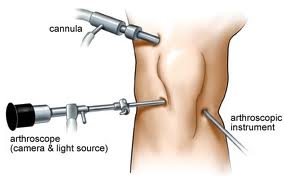
Pre and Post Operative ACL Surgical Protocols
Once the diagnosis is determined that the ACL, anterior cruciate ligament, has been torn or partially torn, then the Dr. and patient have to plan a course of action. What is generally forgotten is the repair of torn tissue is relatively easy to repair, however the real injury is the atrophy, stiffness, loss of range of motion the patient encounters pre and post surgery. Most orthopedic surgeons do not want to operate on a knee when it is inflammed, red and the patient is in pain. Our body actually adjusts to the injury and proceeds to "self heal" through a series of chemical and electrical changes it initiates. That is the inflammatory process and is natural but it does carry additional risk if surgical intervention occurs during this process.
For the actual timeline, 98 days, following acl surgery on the author's daughter go here.
A general rule well founded is immediately upon injury begin to ICE. The chilling effect is a vaso constrictor and helps minimize the post acute trauma injury process. It's after chilling and reducing the inflammation and pain that the body starts healing and now the physician can safely intervene to repair the damaged ligament.
Here is an excellent guide on what to do to prepare for surgery as well as what to do post surgery. A guide by Dr. Peter Millet of The Steadman Clinic.
With acl operations the issue is what has already been mentioned, the rehab. process. For many athletes they actually become stronger in both legs after a vigorous rehab. program aimed at muscle strengthening so in future competitions they are literally stronger than before and often better able to perform due to increased muscle strength and torque. As you can see in this video it is not unusual when using muscle specific exercises coupled with functional electrical stimulation to have a patient back in athletic competition 8 weeks post surgery. Unfortunately though there is wisdom in "Pain is Gain" during the strengthening phases of recovery. The patient's attitude to get better, coupled with the ability to work through pain is the deciding factor of rapid recovery and the affordable option of using a functional electrical stimulator.


